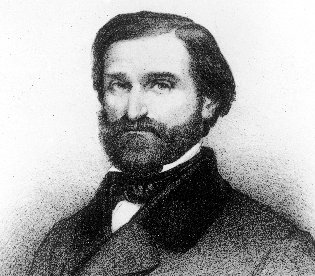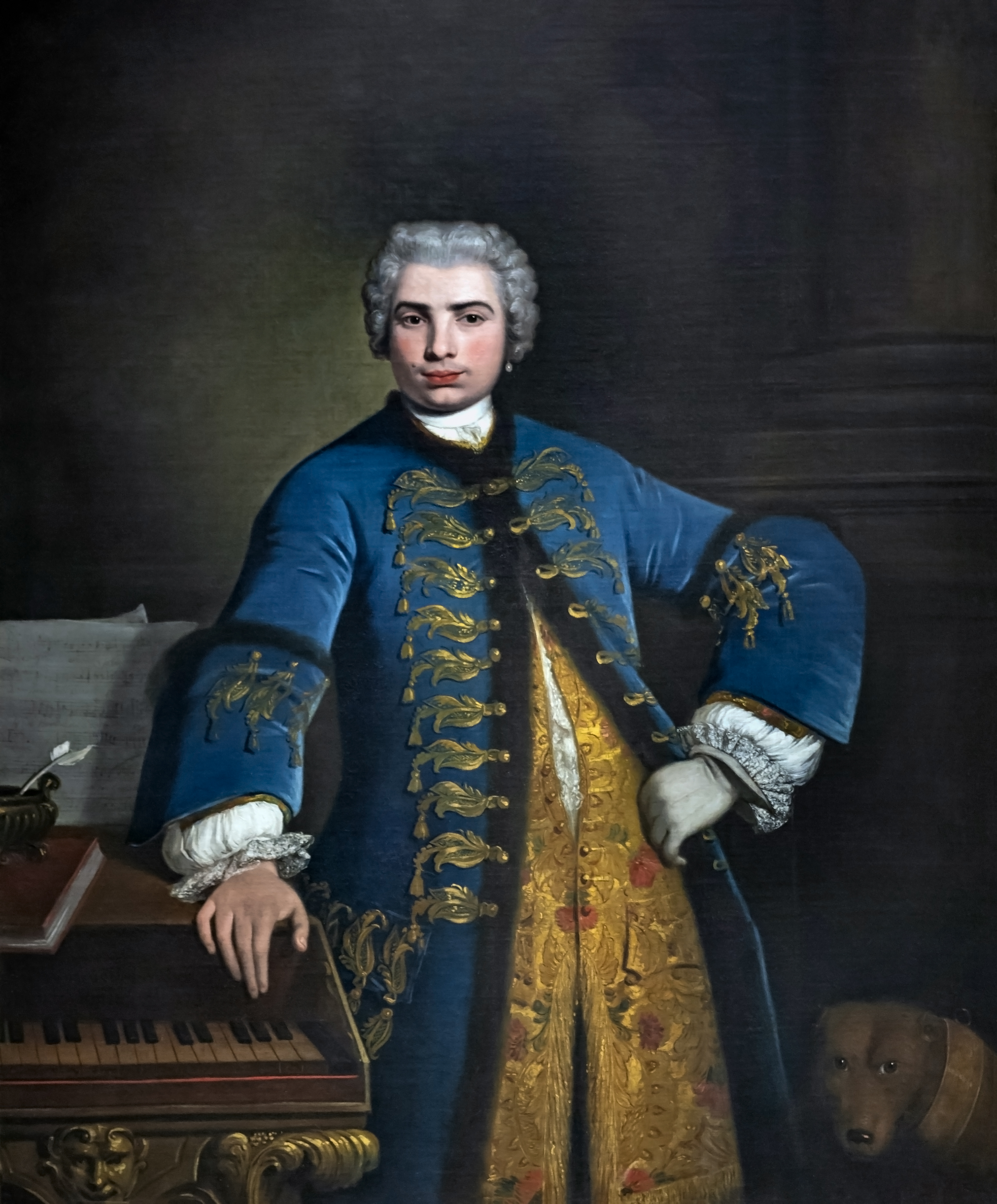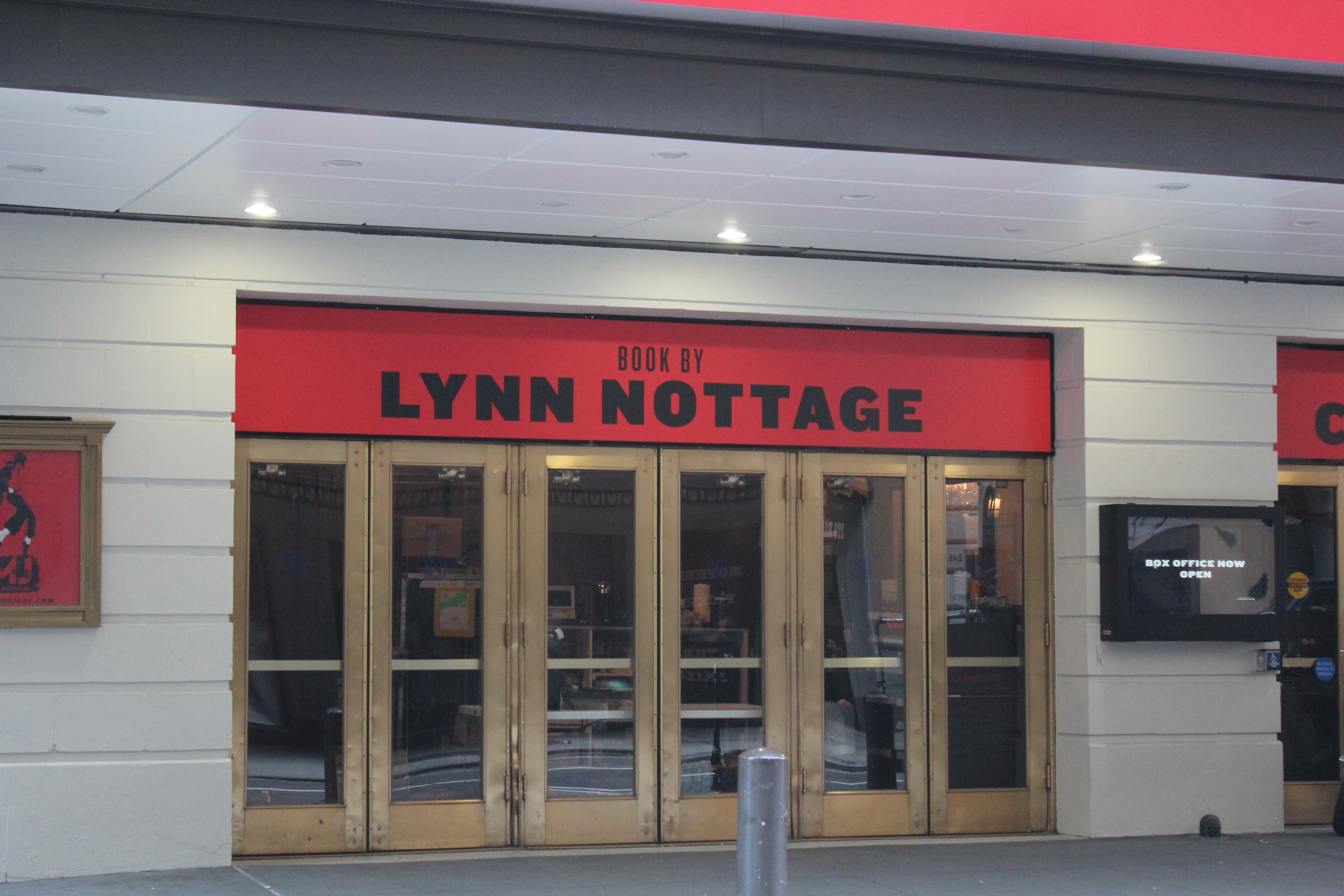|
Grace Panvini
Grazia Panvini (April 6, 1907 – February 12, 1999), also known by her married name Grace Panvini Rice, was an American soprano and voice teacher. She had an active performance career from 1931 to 1952. On stage, her career spanned from opera to musical theatre and the concert repertoire. She performed in the Broadway musicals ''Music in the Air'' (1932–1933) and ''Great Lady'' (1938), returning later to Broadway as Rosina in an English language adaption of Rossini's ''Il barbiere di Siviglia'' entitled '' Once Over Lightly'' in 1942. As a coloratura soprano, she spent several years as a leading performer with the San Carlo Opera Company, and was particularly celebrated for her performances in the roles of Rosina in ''The Barber of Seville'' and Gilda in Verdi's ''Rigoletto''. She also appeared in operas with other American companies like the New York City Opera, Central City Opera, and Cincinnati Opera. After retiring from performance in 1952, Panvini and her husband, the ... [...More Info...] [...Related Items...] OR: [Wikipedia] [Google] [Baidu] |
Rigoletto
''Rigoletto'' is an opera in three acts by Giuseppe Verdi. The Italian libretto was written by Francesco Maria Piave based on the 1832 play ''Le roi s'amuse'' by Victor Hugo. Despite serious initial problems with the Austrian censors who had control over northern Italian theatres at the time, the opera had a triumphant premiere at La Fenice in Venice on 11 March 1851. The work, Verdi's sixteenth in the genre, is widely considered to be the first of the operatic masterpieces of Verdi's middle-to-late career. Its tragic story revolves around the licentious Duke of Mantua, his hunch-backed court jester Rigoletto, and Rigoletto's daughter Gilda. The opera's original title, ''La maledizione'' (The Curse), refers to a curse placed on both the Duke and Rigoletto by a courtier whose daughter the Duke has seduced with Rigoletto's encouragement. The curse comes to fruition when Gilda falls in love with the Duke and sacrifices her life to save him from the assassin hired by her father. Comp ... [...More Info...] [...Related Items...] OR: [Wikipedia] [Google] [Baidu] |
Florida Grand Opera
Florida Grand Opera (FGO) is an American opera company based in Miami, Florida. It is the oldest performing arts organization in Florida and the seventh oldest opera company in the United States. FGO was created in 1994 from the consolidation of two opera companies in the Miami-Fort Lauderdale region: Opera Guild of Greater Miami, founded in 1941 by Arturo di Filippi; and the Opera Guild, Inc. of Fort Lauderdale, formed in 1945. Location FGO is the resident company at the Ziff Ballet Opera House, located in the Adrienne Arsht Center for the Performing Arts in Miami, and also at the Au-Rene Theater at the Broward Center for the Performing Arts in Fort Lauderdale. FGO sometimes stages at other area theaters, including Lauderhill Performing Arts Center in Broward County and the Miami Shrine Temple in Miami-Dade. History Founding and early years In 1941, the company was founded as the Opera Guild of Greater Miami by Arturo di Filippi, a tenor and voice teacher at the University of ... [...More Info...] [...Related Items...] OR: [Wikipedia] [Google] [Baidu] |
Salisbury Times
Salisbury ( ) is a cathedral city in Wiltshire, England with a population of 41,820, at the confluence of the rivers Avon, Nadder and Bourne. The city is approximately from Southampton and from Bath. Salisbury is in the southeast of Wiltshire, near the edge of Salisbury Plain. Salisbury Cathedral was formerly north of the city at Old Sarum. The cathedral was relocated and a settlement grew up around it, which received a city charter in 1227 as . This continued to be its official name until 2009, when Salisbury City Council was established. Salisbury railway station is an interchange between the West of England Main Line and the Wessex Main Line. Stonehenge is a UNESCO World Heritage Site and is northwest of Salisbury. Name The name ''Salisbury'', which is first recorded around the year 900 as ''Searoburg'' (dative ''Searobyrig''), is a partial translation of the Roman Celtic name ''Sorbiodūnum''. The Brittonic suffix ''-dūnon'', meaning "fortress" (in referen ... [...More Info...] [...Related Items...] OR: [Wikipedia] [Google] [Baidu] |
Coloratura
Coloratura is an elaborate melody with runs, trills, wide leaps, or similar virtuoso-like material,''Oxford American Dictionaries''.Apel (1969), p. 184. or a passage of such music. Operatic roles in which such music plays a prominent part, and singers of these roles, are also called coloratura.Steane, J. B.; Jander, Owen, "Coloratura" in Sadie (1992) 1: 907. Its instrumental equivalent is ornamentation. Coloratura is particularly found in vocal music and especially in operatic singing of the 18th and 19th centuries. The word ''coloratura'' ( , , ) means "coloring" in Italian, and derives from the Latin word ''colorare'' ("to color"). History The term ''coloratura'' was first defined in several early non-Italian music dictionaries: Michael Praetorius's ''Syntagma musicum'' (1618); Sébastien de Brossard's ''Dictionaire de musique'' (1703); and Johann Gottfried Walther's ''Musicalisches Lexicon'' (1732). In these early texts "the term is dealt with briefly and always wit ... [...More Info...] [...Related Items...] OR: [Wikipedia] [Google] [Baidu] |
44th Street Theatre
The 44th Street Theatre was a Broadway theatre located at 216 West 44th Street in New York City from 1912 to 1945. It opened and operated for three years as the Weber and Fields' Music Hall. Its rooftop theatre, the Nora Bayes Theatre, presented many productions of the Federal Theatre Project in the mid 1930s. Its basement club became the famed Stage Door Canteen during World War II. History The 44th Street Theatre was located at 216 West 44th Street in New York City. The architect was William Albert Swasey, who designed the theatre in an 18th Century Georgian style. Built by The Shubert Organization in 1912, it was first named Weber and Fields' Music Hall. The theatre was renamed on December 29th, 1913 when the comedy duo of Joe Weber and Lew Fields split with the Shuberts. A theatre on the roof of the building, Lew Fields' 44th Street Roof Garden, became the Nora Bayes Theatre in 1918. In the mid-1930s it presented Federal Theatre Project shows. In the basement of ... [...More Info...] [...Related Items...] OR: [Wikipedia] [Google] [Baidu] |
Neil Simon Theatre
The Neil Simon Theatre, originally the Alvin Theatre, is a Broadway theatre, Broadway theater at 250 West 52nd Street (Manhattan), 52nd Street in the Theater District, Manhattan, Theater District of Midtown Manhattan in New York City. Opened in 1927, the theater was designed by Herbert J. Krapp and was built for Alex A. Aarons and Vinton Freedley. The original name was an amalgamation of Aarons's and Freedley's first names; the theater was renamed for playwright Neil Simon in 1983. The Neil Simon has 1,467 seats across two levels and is operated by the Nederlander Organization. Both the facade and the auditorium interior are List of New York City Landmarks, New York City landmarks. The facade is divided into two sections: the six-story stage house to the west and the five-story auditorium to the east. The ground floor is clad with architectural terracotta, terracotta blocks and contains an entrance with a marquee (structure), marquee. The upper stories of both sections are made ... [...More Info...] [...Related Items...] OR: [Wikipedia] [Google] [Baidu] |
Jerome Kern
Jerome David Kern (January 27, 1885 – November 11, 1945) was an American composer of musical theatre and popular music. One of the most important American theatre composers of the early 20th century, he wrote more than 700 songs, used in over 100 stage works, including such classics as " Ol' Man River", " Can't Help Lovin' Dat Man", " A Fine Romance", " Smoke Gets in Your Eyes", " The Song Is You", " All the Things You Are", " The Way You Look Tonight" and " Long Ago (and Far Away)". He collaborated with many of the leading librettists and lyricists of his era, including George Grossmith Jr., Guy Bolton, P. G. Wodehouse, Otto Harbach, Oscar Hammerstein II, Dorothy Fields, Johnny Mercer, Ira Gershwin and Yip Harburg. A native New Yorker, Kern created dozens of Broadway musicals and Hollywood films in a career that lasted for more than four decades. His musical innovations, such as 4/4 dance rhythms and the employment of syncopation and jazz progressions, built on, r ... [...More Info...] [...Related Items...] OR: [Wikipedia] [Google] [Baidu] |
Oscar Hammerstein II
Oscar Greeley Clendenning Hammerstein II (; July 12, 1895 – August 23, 1960) was an American lyricist, librettist, theatrical producer, and (usually uncredited) director in the musical theater for almost 40 years. He won eight Tony Awards and two Academy Awards for Best Original Song. Many of his songs are standard repertoire for vocalists and jazz musicians. He co-wrote 850 songs. He is best known for his collaborations with composer Richard Rodgers, as the duo Rodgers and Hammerstein, whose musicals include ''Oklahoma!'', '' Carousel'', ''South Pacific'', '' The King and I'', and ''The Sound of Music''. Described by Stephen Sondheim as an "experimental playwright", Hammerstein helped bring the American musical to new maturity by popularizing musicals that focused on stories and character rather than the lighthearted entertainment that the musical had been known for beforehand. He also collaborated with Jerome Kern (with whom he wrote '' Show Boat''), V ... [...More Info...] [...Related Items...] OR: [Wikipedia] [Google] [Baidu] |
Brooklyn Academy Of Music
The Brooklyn Academy of Music (BAM) is a performing arts venue in Brooklyn, New York City, known as a center for progressive and avant-garde performance. It presented its first performance in 1861 and began operations in its present location in 1908. The Academy is incorporated as a New York State not-for-profit corporation. It has 501(c)(3) status. Katy Clark became president in 2015 and left the institution in 2021. David Binder became artistic director in 2019. History 19th and early 20th centuries On October 21, 1858, a meeting was held at the Polytechnic Institute to measure support for establishing "a hall adapted to Musical, Literary, Scientific and other occasional purposes, of sufficient size to meet the requirements of our large population and worth in style and appearance of our city." [...More Info...] [...Related Items...] OR: [Wikipedia] [Google] [Baidu] |
Maurice Abravanel
Maurice Abravanel (January 6, 1903 – September 22, 1993) was an American classical music conductor. He is remembered as the conductor of the Utah Symphony Orchestra for over 30 years. Life Abravanel was born in Salonika, Rumelia Eyalet, Ottoman Empire (modern Thessaloniki, Greece). He came from an illustrious Sephardic Jewish family, which was expelled from Spain in 1492 (see Isaac Abrabanel). Abravanel's ancestors settled in Salonika in 1517, and his parents were both born there. In 1909, the Abravanel family moved to Lausanne, Switzerland, where his father, Edouard de Abravanel, was a successful pharmacist. For several years, the Abravanels lived in the same house as Ernest Ansermet, the conductor of the Orchestre de la Suisse Romande. The young Abravanel played four-hand piano arrangements with Ansermet, began to compose, and met composers such as Darius Milhaud and Igor Stravinsky. He was passionate about music and knew he wanted a career as a musician. He became t ... [...More Info...] [...Related Items...] OR: [Wikipedia] [Google] [Baidu] |
Fausto Cleva
Fausto Cleva (May 17, 1902August 6, 1971) was an Austro-Hungarian Empire-born American operatic conductor. Life and career Fausto Cleva was born in Trieste in 1902. After studies at the Conservatorio in his native city and Milan, Cleva made his debut conducting ''La traviata'' in Teatro Carcano, in Milan, before emigrating to the United States in 1920, becoming an American citizen in 1931. He joined the musical staff of the Metropolitan Opera later that year and for twenty years was an assistant conductor and later chorus-master and répétiteur before making his official conducting debut in February 1942. He later became closely involved with Cincinnati Summer Opera, of which he was musical director from 1934 until 1963. From 1944 to 1946 he was music director of the ill-fated Chicago Opera Company. In 1947 he conducted a performance of ''La bohème'' in Havana, with Hjördis Schymberg as Mimi. Following his return to the Metropolitan Opera in 1950, he conducted over 700 perform ... [...More Info...] [...Related Items...] OR: [Wikipedia] [Google] [Baidu] |
Vocal Coach
A vocal coach, also known as a voice coach (though this term often applies to those working with speech and communication rather than singing), is a music teacher, usually a piano accompanist, who helps singers prepare for a performance, often also helping them to improve their singing technique and take care of and develop their voice, but is not the same as a singing teacher (also called a "voice teacher"). Vocal coaches may give private music lessons or group workshops or masterclasses to singers. They may also coach singers who are rehearsing on stage, or who are singing during a recording session. Vocal coaches are used in both Classical music and in popular music styles such as rock and gospel. While some vocal coaches provide a range of instruction on singing techniques, others specialize in areas such as breathing techniques or diction and pronunciation. Roles A vocal coach is sometimes responsible for writing and producing vocal arrangements for four-part harmony for ... [...More Info...] [...Related Items...] OR: [Wikipedia] [Google] [Baidu] |

.jpg)







